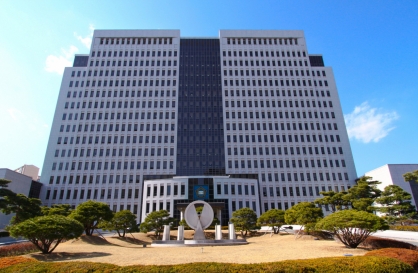Copenhagen, a pioneering city in green growth, is sharing its advanced technologies and policies in a photo exhibition at Seoul City Hall.
Detailed descriptions and images highlighting the Danish capital’s sustainable transformation over the last four decades are showcased at “Copenhagen Solutions,” which runs until Sept. 8.
The exhibition provides insights for Seoul’s citizens and government, which is vying to be Asia’s leading city in sustainable initiatives through campaigns promoting alternatives to nuclear power and a greater use of public transportation.
Detailed descriptions and images highlighting the Danish capital’s sustainable transformation over the last four decades are showcased at “Copenhagen Solutions,” which runs until Sept. 8.
The exhibition provides insights for Seoul’s citizens and government, which is vying to be Asia’s leading city in sustainable initiatives through campaigns promoting alternatives to nuclear power and a greater use of public transportation.

Denmark and Korea have stepped up collaboration in green growth in recent years, as both countries are leaders in green technology and information technology. Seoul Mayor Park Won-soon visited Copenhagen last year to bolster cooperation in public transportation and observe its bicycle infrastructure.
As Copenhagen aims to be the world’s first carbon-neutral city by 2025, it has promoted collaboration and open communication between diverse players for transparent and effective city development and management.
The combined efforts of municipalities, businesses and society have turned the dilapidated industrial city into a vibrant green city since 2000.
Denmark’s master plans target public transportation, mixed area use, social housing, energy-efficient buildings, and big data monitoring, helping to attract business with a long-term and stable investment climate.
Like most other cities around the world, Copenhagen’s growth in the latter half of the 20th century entailed severe traffic congestion and air pollution. To relieve the situation, the municipal government invested heavily in uninterrupted cycle lanes and public transportation, which continue to be key aspects of urban governance.
According to the State of Green ― a Danish green technology promotional agency ― half of all work and school trips in Copenhagen involve cycling. This has reduced travel time, noise, air pollution and carbon dioxide emissions, improving citizens’ health while reducing health care costs. Cycling-related injuries decreased by over 70 percent since 2005, thanks to bicycle-friendly infrastructure and a safe driving culture.
Copenhagen’s integrated city governance is based on a holistic partnership between planners, city councilors, architects, engineers, investors, contractors, builders and citizens.
Since the early 2000s, the city government transformed the polluted harbor into a clean recreational waterfront by modernizing the sewage system, initiating a cleaning program and constructing harbor baths. Citizens now swim, sail and fish in the Copenhagen Harbor year round. Adjacent property prices increased by nearly 60 percent and flooding risks have decreased.
As a prime example of waterfront renovation, the Nordhavnen industrial harbor, comprised of islets and canals on Copenhagen’s eastern shore, is being turned into a dense city district accommodating 40,000 residents and 40,000 work spaces.
A “smart city” prototype, it will use CO2-neutral energy solutions, smart grids, district heating and cooling, and public transit systems integrating bike paths, pedestrian walkways and subways.
All buildings in Copenhagen were required to join the district heating scheme as part of an integrated municipal energy control system since 1993. District heating is one of the most carbon-efficient ways to produce and supply energy locally, and lowers CO2 emissions by 40 percent compared to gas and 50 percent compared to oil boilers.
To combat the rising inner-city temperature from global warming, Copenhagen built two district cooling networks, which produce and distribute cooled water to buildings through underground pipelines. It reduces dependence on air-conditioning, saving 14,000 tons of carbon dioxide per year. It has also turned rooftops where air-conditioners were once stored into green gardens, helping cool the city temperature.
To reduce reliance on fossil fuels, Copenhagen has prioritized biomass technologies that generate energy by incinerating waste products. 60,000 tons of CO2 emissions are expected to be saved by the technology.
Copenhagen has partnered with the Swedish city of Malmo across the sea for regional solutions in sustainable living and commerce. The two cities are working to strengthen collaboration in innovative research, clean technology, life sciences and ICT solutions.
Copenhagen has also recently partnered Hamburg in the creative industries, climate adaptation, renewable energy, tourism, culture, and research and development.
By Joel Lee (joel@heraldcorp.com)
-
Articles by Korea Herald





![[K-pop’s dilemma] Can K-pop break free from ‘fandom’ model?](http://res.heraldm.com/phpwas/restmb_idxmake.php?idx=644&simg=/content/image/2024/05/09/20240509050541_0.jpg&u=20240509173751)




![[News Analysis] Yoon's first 2 years marked by intense confrontations, lack of leadership](http://res.heraldm.com/phpwas/restmb_idxmake.php?idx=644&simg=/content/image/2024/05/09/20240509050612_0.jpg&u=20240509233252)








![[Today’s K-pop] NCT’s Mark to drop 1st solo album in February 2025](http://res.heraldm.com/phpwas/restmb_idxmake.php?idx=642&simg=/content/image/2024/05/10/20240510050597_0.jpg&u=)